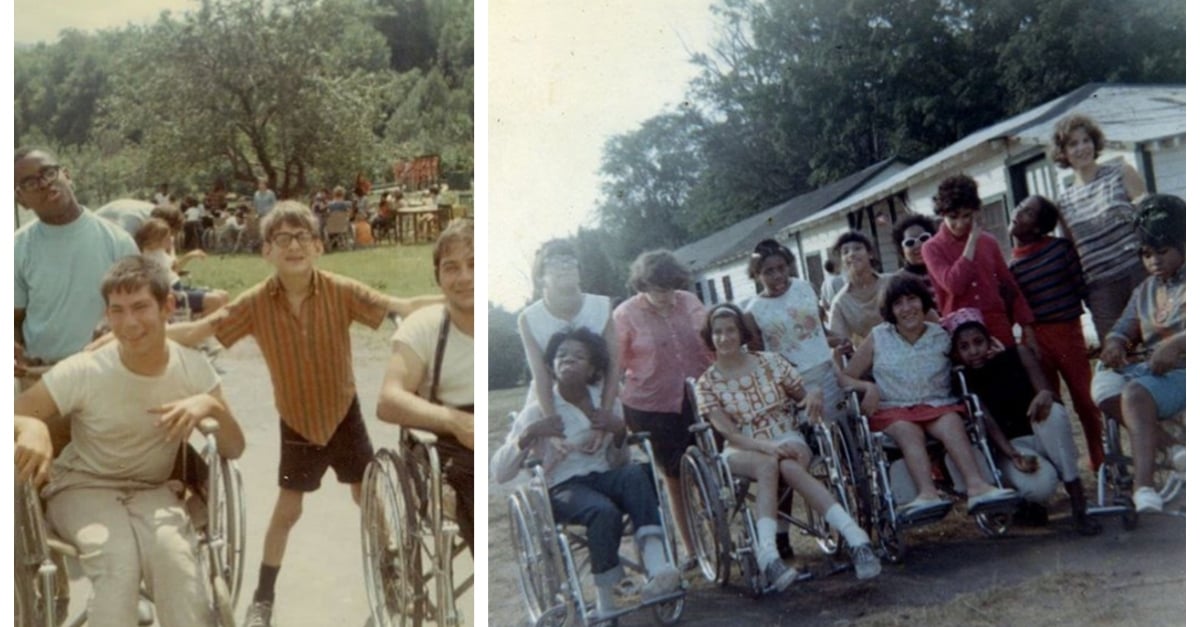
Camp Jened was a "transformative" summer camp for disabled teens that was founded in upstate New York in the 1950s. Recently, Netflix produced a documentary about what it was like for the teens to be at camp for two months. The documentary, titled Crip Camp: A Disability Revolution, also explains how the camp became a springboard for the political activism that led to the passing of the Americans With Disabilities Act (ADA) on July 26, 1990.
Nicole Newnham and Jim LeBrecht, a former camp counselor, directed the documentary. Jim, who was born with spina bifida, explains why the pair wanted to help make the documentary happen. "I think both of our hopes were that we could reframe how people think of disability and people with disabilities … Maybe we should be treating people [and] thinking about people that are not like us in these fresh eyes and open minds, and realize that things are really not what they seem."
Many Americans aren't familiar with the passage of the ADA and may not even remember the political activism that brought equal rights to disabled Americans.
On July 26, 1990, then-President George Bush signed the historic legislation into law. Activist Geeg deFiebre recently described what led up to this moment:
"On March 13, 1990, ADAPT held a march from the White House to the U.S. Capitol to demand that Congress pass the ADA. When they got there, about 60 of them got out of their wheelchairs or removed their mobility devices and literally crawled up the Capitol steps."
"The 'Capitol Crawl' was a demonstration of how the built environment was inaccessible to people with disabilities. This demonstration was part of a week of demonstrations in D.C. about the ADA. The day after the crawl, police arrested 104 people at an ADAPT protest inside the Capitol rotunda. These demonstrations helped push the government to pass the ADA."
However, the seeds for the Capitol Crawl were planted decades before that day, and likely were nurtured at Camp Jened. The directors of the camp wanted to make sure that the voices of disabled activists were centered in the story, and they began that journey by contacting long-time activist Judith Heumann.
Nicole Newnham explained, "[Judy explained that] places like Camp Jened play an enormous role in sparking activism because they were the places where people gathered together and realized that they had similar problems and those problems were because of structural oppression."
Judy is a survivor of polio who has been in a wheelchair most of her life. She looks back on her time at Camp Jened fondly.
"There was a finite amount of time at camp, and very close relationships were developed. I really think it boosted people's sense of self. It allowed people to really value who they are and what their dreams were."
Jim LeBrecht added that the camp was powerful because it allowed the teens to just live and breathe as who they are: "For two months out of the year, I had this experience where I wasn't an 'other.' I even found my first girlfriend there."
The disability rights movement in the United States was well underway in the 1970s, and many attending the camp realized that they could participate in the movement itself:
"[At Camp Jened] we were able to envision a world that didn't have to be set up in a way that excluded us. We started to have a common vision and were beginning to talk about things like, 'Why are buses not accessible?'"
And so they put their minds and passions together and began. In 1977, Judy led a group of more than 150 disabled activists in the "504 Sit-in." They sat outside San Francisco's Federal Building for 25 days, which was the longest sit-in at a federal building in history. Their goal was to receive regulations to section 504 of the Rehabilitation Act. The act prohibited discrimination against people who have disabilities, but no one was enforcing it.
The action worked, and new regulations were adopted. Those regulations became the groundwork for the nationwide Americans With Disabilities Act in 1990. In summation, the ADA "prohibits discrimination against people with disabilities in several areas, including employment, transportation, public accommodations, communications and access to state and local government programs and services."
The camp also gave the teens a chance to form real relationships and friendships. Jim noted that a lot of those relationships continue to this day: "There's an email list of about 48 people that have stayed in touch from New York to Israel to different places."




